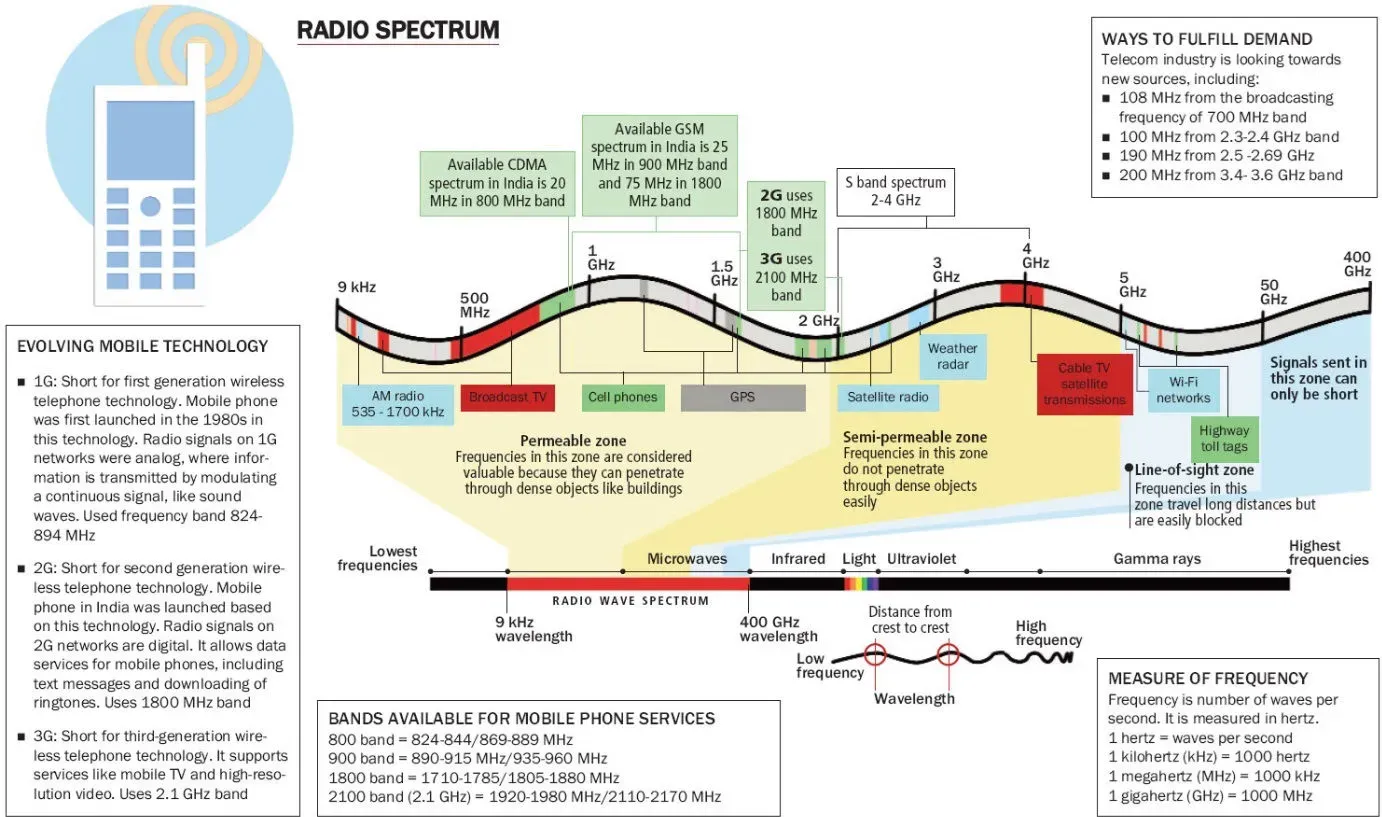- Courses
- GS Full Course 1 Year
- GS Full Course 2 Year
- GS Full Course 3 Year
- GS Full Course Till Selection
- MEP (Mains Enrichment Programme) Data, Facts
- Essay Target – 150+ Marks
- Online Program
- GS Recorded Course
- NCERT- First Ladder
- Polity
- Geography
- Economy
- Ancient, Medieval and Art & Culture AMAC
- Modern India, Post Independence & World History
- Environment
- Governance
- Science & Technology
- International Relations and Internal Security
- Disaster Management
- Ethics
- Current Affairs
- Indian Society and Social Issue
- CSAT
- 5 LAYERED ARJUNA Mentorship
- Public Administration Optional
- ABOUT US
- OUR TOPPERS
- TEST SERIES
- FREE STUDY MATERIAL
- VIDEOS
- CONTACT US
Satellite Spectrum and Allocation Practices in India
Satellite Spectrum and Allocation Practices in India
24-10-2024
- On 22nd oct 2024, Union Communications Minister Jyotiraditya Scindia clarified that satellite communication (satcom) spectrum will be allocated through an administrative process, rather than through auctions as suggested by Reliance Jio.
- This decision highlights important issues in how countries manage satellite spectrum, which is different from terrestrial (ground-based) spectrum.
What is Airwaves/Spectrum?

- Airwaves refer to radio frequencies within the electromagnetic spectrum that can transmit information wirelessly.
- Used for various services, including telecommunications, broadcasting, and data transmission.
- Governed and allocated by the government to ensure organized use and avoid interference among users.
- The government auctions a fixed amount of spectrum within specified frequency bands.
- Allocated to operators for providing communication services to consumers.
- To facilitate wireless communication and enable a range of technological services.
What is Satellite Communication?
- Satellite communication uses satellites in orbit to provide connectivity to homes and businesses.
- Unlike ground-based systems like cable or fiber optics, satellite systems do not require physical wires.
- Benefits:
- Wider Coverage: Satellite systems can reach remote and rural areas where traditional mobile networks may not be available.
- Resilience: These systems are generally more durable during extreme weather, as they have fewer components on the ground that could be damaged.
-
Satellite Frequency Bands
-
- L-band (1-2 GHz): Used for GPS and mobile satellite services.
- S-band (2-4 GHz): Used for weather radar, air traffic control, and mobile satellite services.
- C-band (4-8 GHz): Commonly used for satellite TV broadcasting and data communications.
- X-band (8-12 GHz): Used primarily by the military for radar and communication.
- Ku-band (12-18 GHz) and Ka-band (26-40 GHz): Used for satellite television, internet, and high-throughput data transmission.
The Nature of Satellite Spectrum:
- International Character: Satellite spectrum is different from terrestrial spectrum, which is confined to specific geographical areas.
- Because satellite signals can cross borders, they require international coordination, primarily managed by the International Telecommunication Union (ITU), a UN agency.
- Administrative Allocation: The recent Telecommunications Act, 2023, in India added satellite spectrum to the list that will be allocated administratively. This means that the government will assign frequencies without conducting an auction.
Global Practices in Spectrum Allocation : Exclusivity vs. Non-Exclusivity:
- Terrestrial Networks: Spectrum for these services is exclusive, meaning only one operator can use a specific frequency in a given area.
- Satellite Networks: The spectrum is non-exclusive and can be shared among multiple operators, making administrative allocation more practical.
Historical Attempts at Auctions
- United States: The last auction for satellite spectrum was held in 2004, focusing on broadcasting services. Since then, the U.S. has moved back to administrative assignments due to the challenges of the auction process.
- Brazil: In 2020, Brazil replaced satellite auctions with an administrative licensing process, although it still assigns landing rights through bidding.
- Saudi Arabia: Recently held an auction for the S-band spectrum used for mobile satellite services, but the technical nature of this band allows for exclusive assignments, which differs from typical satellite spectrum.
Benefits of Satellite Communication
- Wider Coverage: Satcom services can reach remote and rural areas that lack ground infrastructure, making them essential for connectivity in underserved regions.
- Satellite systems are generally more durable during natural disasters, as they rely on fewer ground components. This makes them less likely to be affected by severe weather.
- India’s satcom sector is expected to grow from $2.3 billion annually to $20 billion by 2028, offering significant investment opportunities in untapped markets.
- India ranks 4th globally in terms of investments in the satellite communication sector.
- Untapped Households: According to Morgan Stanley, around 290.4 million households in India lack broadband access, representing a strong market opportunity for satellite operators.
Auction vs. Administrative Allocation
Auction |
Administrative Allocation |
|
|
Key Differences
- Competition: Auctions are competitive and market-driven, while administrative allocation is a direct government assignment.
- Revenue: Auctions generate substantial revenue; administrative allocation typically involves lower fees.
- Transparency: Auctions are more transparent, while administrative allocation may lack this clarity but offers more flexibility.
Controversies, especially with the shift from auction-based allocations to administrative assignments. Notably:
- 2G Spectrum Scam: This scandal involved allocating licenses on a first-come, first-served basis, leading to significant financial losses and legal actions. The Supreme Court indicated a presumed loss to the government of ₹30,984 crore and a potential loss of ₹1.76 trillion due to the allocation of 122 2G licenses to telecom companies.
- Supreme Court Mandate: In 2012, the Supreme Court mandated auctions as the preferred method for spectrum allocation, influenced by the fallout from the 2G scandal.
- Telecommunications Act 2023: Despite past controversies, this act provides a non-auction route specifically for satellite spectrum allocation.
Must Check: Best IAS Coaching In Delhi
UPSC Prelims Result 2024 Out: Expected Cut Off & Other Details, UPSC Prelims 2024 Answer with Explanation, Daily Prelims Quiz, Daily Current Affairs, MONTHLY CURRENT AFFAIRS TOTAL (CAT) MAGAZINE, Best IAS Coaching Institute in Karol Bagh, Best IAS Coaching Institute in Delhi, Daily Mains Question Answer Practice, ENSURE IAS UPSC Toppers, UPSC Toppers Marksheet, Previous Year Interview Questions, UPSC Syllabus




